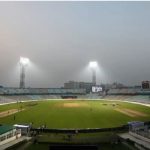In the first half of 2024, fifteen out of 24 cities in Haryana were ranked among India’s 100 most polluted cities based on PM2.5 levels, according to a recent analysis. All cities in the state exceeded both the National Ambient Air Quality Standards (NAAQS) and the World Health Organization (WHO) guidelines for particulate matter.
Faridabad was the most polluted, with an average PM2.5 level of 103 micrograms per cubic meter, well above NAAQS and WHO limits. Gurugram recorded the highest PM10 concentration at 227 micrograms per cubic meter, while Ambala had the lowest at 79 micrograms per cubic meter.
Currently, only Faridabad is included in the National Clean Air Programme (NCAP), which aims to reduce particulate pollution by 20-30% by 2024 and by 40% by 2026. The NCAP covers 131 cities that failed to meet air quality standards between 2011 and 2015.
Experts suggest that existing national standards may be insufficient and advocate for aligning with WHO guidelines. They propose an airshed approach to improve coordination across states and cities for more effective air quality management. The Centre for Research on Energy and Clean Air (CREA) calls for a strengthened NCAP with better monitoring and enforcement to protect public health.






